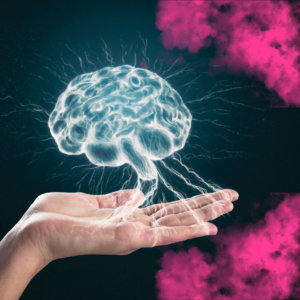Study: CBG, THCV Show Promise for Parkinson’s and Alzheimer’s

New Scientific Review Suggests Lesser-Known Cannabis Compounds Could Treat Brain Disorders
A new scientific review highlights the potential therapeutic benefits of marijuana compounds beyond the well-known THC and CBD, suggesting that a variety of lesser-known phytocannabinoids, terpenes, flavonoids, and alkaloids found in cannabis could help treat brain disorders. The report, authored by two researchers from the Center for Dementia Research at the Nathan Kline Institute for Psychiatric Research in New York, was released last month through Preprints.org and offers promising insights into cannabis as a treatment for neurological conditions.
Among the compounds discussed are THCV, CBDV, and CBG—each of which may provide unique neuroprotective properties. The researchers emphasize that these minor cannabinoids possess antioxidant, anti-inflammatory, and neuromodulatory effects, positioning them as potential agents in treating neurodegenerative disorders such as Alzheimer’s, Parkinson’s, and Huntington’s disease, as well as epilepsy and substance use disorders.
Potential Therapeutic Applications of Minor Cannabinoids
The review underscores that while THC and CBD have been extensively studied, minor cannabinoids are still largely underexplored. These lesser-known compounds, including THCV (tetrahydrocannabivarin), CBDV (cannabidivarin), and CBG (cannabigerol), may offer unique benefits, particularly for treating brain-related illnesses.
The study emphasizes the importance of continuing research on these compounds to develop new treatments for brain disorders, noting that emerging evidence points to their potential in neuroprotection. The antioxidant and anti-inflammatory properties of these cannabinoids, the authors argue, make them promising candidates for addressing neurodegenerative diseases.
Cannabis for Neuroprotection and Disease Management
The report also explores how these cannabinoids, along with terpenes and flavonoids, could be integrated into future treatments. Terpenes, the aromatic compounds found in cannabis, are noted for their therapeutic potential, particularly in modulating the effects of cannabinoids and possibly enhancing their effectiveness through what’s known as the “entourage effect.”
“While the pharmacological mechanisms of many [minor cannabinoids] remain underexplored, emerging studies suggest their potential to develop novel therapies for brain disorders,” the researchers write. “These findings could pave the way for innovative cannabinoid plant-based treatments that go beyond the scope of traditional approaches.”
This emerging research holds the potential to revolutionize how cannabis-based treatments are developed, especially for complex neurological conditions that currently have limited treatment options.
Cannabinoids and Anticancer Properties
This new review follows another recent study that found minor cannabinoids may also have anticancer properties. Published in the journal BioFactors, the research examined the effects of cannabinoids like CBG, CBC (cannabichromene), CBN (cannabinol), and CBDV on blood cancer, specifically multiple myeloma. The study revealed that these compounds could be effective in reducing cancer cell proliferation and bone invasion, particularly highlighting the promising results of CBG and CBN in both cell and mouse models.
The study concluded that these cannabinoids could be promising anticancer agents, adding a new dimension to the potential medical applications of cannabis beyond its neuroprotective and psychoactive properties.
The Entourage Effect and Terpenes’ Role in Therapy
The review also delves into the concept of the “entourage effect,” which suggests that the various compounds in cannabis—cannabinoids, terpenes, and flavonoids—work synergistically to produce therapeutic effects greater than any single component alone. While the entourage effect is widely discussed, the authors acknowledge that its existence is still largely theoretical at the cannabinoid receptor level. However, many biological activities of cannabis terpenes, including their anti-inflammatory, analgesic, and anxiolytic properties, suggest that this synergy is plausible.
A separate study published in the International Journal of Molecular Sciences earlier this year echoed these findings, highlighting how the interaction between phytocannabinoids and other plant compounds can lead to improved therapeutic outcomes. It emphasized the importance of understanding these relationships to fully harness cannabis’s potential for treating neurological and other disorders.
Cannabis as a Treatment for Neuropathic Pain
Further supporting the therapeutic potential of cannabis, a federally funded study released in May found that cannabis terpenes could be effective in treating chronic neuropathic pain. The research showed that terpenes, when injected, produced pain relief comparable to a small dose of morphine but without the risk of reward or addiction. This suggests that terpenes could offer a safer alternative to opioids for pain management.
The findings further reinforce the idea that cannabis compounds could provide significant benefits across a wide range of medical conditions, including pain management, without the downsides of traditional pharmaceuticals like opioids.
Cannabis and Sexual Health: New Research
Beyond brain disorders, research into cannabis’s effects on other areas of health is also expanding. For instance, recent studies have shown that cannabis can improve sexual health by enhancing desire and orgasm satisfaction. One study, published in the Journal of Cannabis Research, found that over 70% of adults reported improved orgasms when using cannabis before sex. This aligns with growing evidence that cannabis’s phytocannabinoids and terpenes interact in ways that can improve various facets of physical and mental health.
Conclusion: A New Era for Cannabis-Based Medicine
As cannabis research continues to evolve, the therapeutic potential of lesser-known cannabinoids, terpenes, and flavonoids is becoming increasingly apparent. The latest review from the Center for Dementia Research underscores that the future of cannabis-based medicine could go far beyond THC and CBD, offering new hope for those suffering from neurological disorders, cancer, chronic pain, and even sexual dysfunction.
While more research is needed to fully understand the pharmacological mechanisms at play, the promise of these compounds is undeniable. With continued investigation, the next generation of cannabis therapies could revolutionize how we treat some of the most challenging medical conditions, providing safer and more effective alternatives to traditional treatments.











